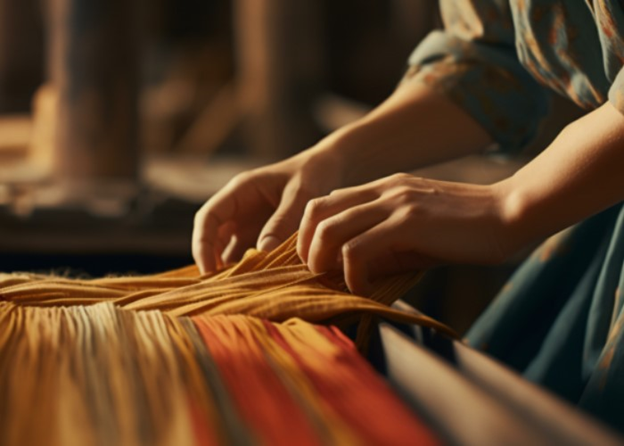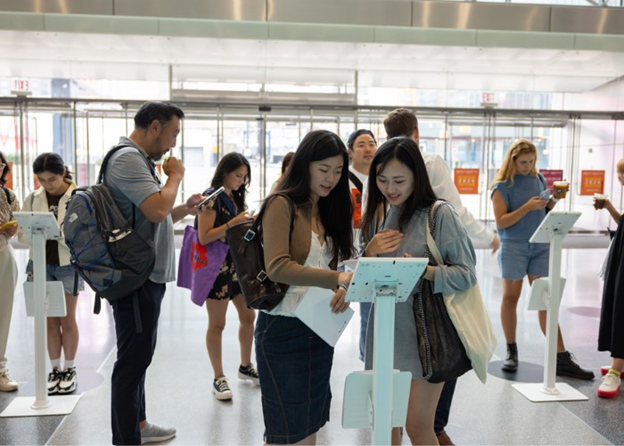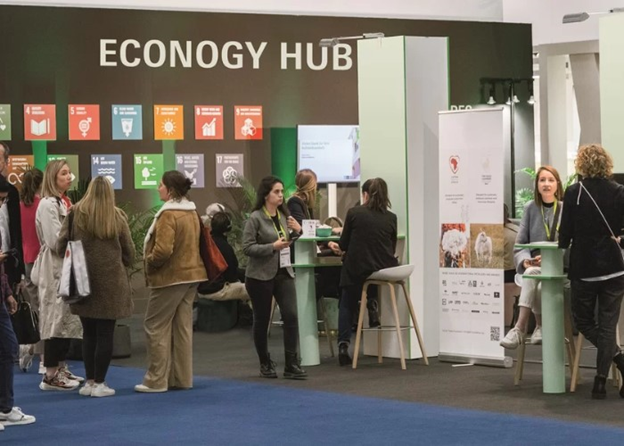October 12, 2023

Diversification is top of mind for sourcing executives. And with good reason. First, spurred on by the 301 duties on goods imported from China, it was then necessitated by work stoppages and bottlenecks during the pandemic, and further accelerated by the Uyghur Forced Labor Protection Act. By strategically tapping suppliers around the globe, the industry hopes to mitigate a rising tide of risk—be it surging costs related to interest rates, wages, raw materials and fuel or geopolitical conflicts, climate disasters and currency fluctuation.
Given the slew of challenges and how quickly conditions can change, the decision of where to source is no longer a simple calculation of first costs. “There’s no merit in retailers moving programs for a few cents,” Pulkit Seth, vice chairman of India-based manufacturing group Pearl Global Industries Ltd., said during Sourcing Journal’s Global Outlook Summit. “Because ultimately, you’re just taking short-term advantage and not going to be sustainable in the long term.”
In the decade between 2012 and 2022, China’s market share of apparel imports to the U.S. dropped from 38 percent to 22 percent. In 2023, the United States Fashion Industry Association (USFIA) found that apparel firms sourced from 44 countries, with Asia dominating the top 10 slots and Mexico, Guatemala and Nicaragua rounding out the list.
Today, sourcing executives are striving to create supply chains that are not only diversified but also agile enough to adapt to uncertainty. Below is a look at some benefits and red flags associated with three of the U.S.’s biggest apparel resources outside of China.
Vietnam
Vietnam represents 17.9 percent of all apparel imports in the U.S., up from 9.2 percent a decade prior. The Department of Commerce’s International Trade Administration sums up Vietnam’s appeal saying it has a “strategic location, young and tech-savvy workforce, welcome approach to foreign investment and a broad network of free trade agreements.” The latter of which include the EU-Vietnam Free Trade Agreement (EVFTA) and Comprehensive and Progressive Agreement for Trans-Pacific Partnership (CPTPP). This all adds up to a surging economy and rising foreign investments.
While competitive prices have helped Vietnam become a top competitor in the space, labor prices are going up. Factory wages have more than doubled since 2011, reaching $320 a month, according to The Wall Street Journal. Reuters cautions that the upward trend could continue, saying, “While Vietnamese workers are more youthful than China’s, they are older than peers in Indonesia and India, so the country’s labour-cost competitiveness may not last.”
Wage increases plus the cost of raw material inputs are also pushing finished goods prices higher. Vietnam relies heavily on raw materials imported from a variety of countries, including China. In addition to price, this impacts lead times. Recently, imports from China have meant more challenges with the enactment of Uyghur Forced Labor Protection Act, which restricts goods from Xinjiang. Year to date through September 2023, U.S. Customs & Border Protection have detained apparel and footwear related shipments valued at $238 million from Vietnam, surpassing the $225 million detained from China.
CAFTA-DR
Apparel imports from the Central America-Dominican Republic free trade agreement countries have “stagnated,” to borrow a term from Beth Hughes, American Apparel and Footwear Association (AAFA) vice president of trade and customs policy. While the proximity of the signatory countries, which include Costa Rica, El Salvador, Guatemala, Honduras, Nicaragua and the Dominican Republic along with the United States, make the region ideal for nearshoring and accelerated deliveries, imports from the region represented 10.2 percent of U.S. apparel imports in 2012, and only inched up to 10.5 percent in 2022.
Currently, the region’s market share is at 10.8 percent, a number that’s expected to grow. Despite the challenges each country faces individually, like infrastructure in Costa Rica, corruption in Honduras and political instability in Nicaragua, the USFIA 2023 Fashion Industry Benchmarking Study found that the industry is leaning into production in the CAFTA-DR region more and more. “Over 80 percent of respondents report sourcing from CAFTA-DR members in 2023, a notable increase from 60 percent in the past few years,” the report said, adding that just under 30 percent placed more than 10 percent of their orders there. Further, 40 percent are looking to increase their commitments there over the next two years.
The survey found that the percentage of goods made by CAFTA-DR members could increase if suppliers there had more raw material access. “‘Allowing more flexibility in sourcing fabrics and yarns from outside CAFTA-DR’ was regarded as the top improvement needed.”
Sheng Lu, associate professor of fashion at the University of Delaware said currently CAFTA-DR suppliers are pigeonholed into offering extremely competitive categories. “Because of a lack of sufficient textile supply within the region, US apparel imports from CAFTA-DR members become increasingly concentrated on basic fashion items, typically facing intense competition with many alternative sourcing destinations,” he said via a blog post. “For example, measured in value, over 80% of US apparel imports from CAFTA-DR members in 2021 were shirts, trousers, and underwear.”
Bangladesh
From 2012 to today, Bangladesh’s market share of apparel imports into the U.S. has risen from 5.8 percent to 9.9 percent. In total, YOY through July 2023 the country exported $47 billion worth of apparel, more than double its exports a decade ago, according to the Vietnam Textile & Apparel Association. Part of what makes the country attractive is its low minimum wage, which equates to approximately $75 per month–though workers are pushing for an increase to as much as $200.
Bangladesh too is reliant on cotton yarn imports from China, India and Turkey. The country is currently lobbying for duty free access to the US for apparel made from U.S. cotton, which represents about 14 percent of the country’s cotton imports, according to The Business Standard.
Also of note is Bangladesh is scheduled to graduate from Least Developed Country status in 2026. “This will mean tariffs and taxes on exports will increase by 20-30%, with estimates of $5.73 billion worth of export being lost,” according to Fashion Revolution’s Fashion Transparency Index 2023. The topic was up for discussion at recent U.S.-Bangladesh talks. In those meetings, the U.S. also addressed the need for labor reforms in the country, particularly centered around the freedom of association and collective bargaining, according to Sourcing Journal. This follows the death of a prominent union leader in June.
The country is currently facing fuel shortages, caused in part by sustained high temperatures. According to Reuters, the resulting power outages threaten productivity for the apparel sector, which represents 80 percent of the country’s exports. Fewer exports in turn means less revenue which will further limit Bangladesh’s ability to gain access to fuel.
The threat to power may only be the beginning. Vogue Business states, “Despite contributing only 0.4 per cent of global carbon emissions in 2018, Bangladesh is disproportionately experiencing the devastating impacts of the climate crisis through flooding, cyclones and extreme heat.”

Registration is Open—Join us January 2024
Registration is now open for the Winter 2024 Edition of Texworld NYC and Apparel Sourcing NYC! Join us at the Javits Center in NYC from January 22-24, 2024, for three exciting days of fashion sourcing. Come connect with top manufacturers and industry professionals.
Reserve your spot by registering here!

Texpertise Marries Economy + Ecology with ‘Econogy’
In cooperation with the United Nations Conscious Fashion and Lifestyle Network, the Texpertise Network is designed to inform and mobilize the industry toward solutions for social, economic and environmental change. Texpertise is specifically mandated to create awareness of the SDGs at each of Messe Frankfurt’s 50 international textile trade fairs in 11 countries.
To reflect where the industry is in terms of the environment, Texpertise has coined the term econogy. Econogy combines economy and ecology and at the same time conveys the notion that sustainability and economic success go hand in hand. Under the econogy banner, Messe Frankfurt is rolling out coordinated discussion, education and networking formats at each of its shows to more strongly underscore sustainability as a sales driver across the global textile industry.
It’s fitting that attendees at the recent Heimtextil 2023 in Frankfurt rated sustainability as the topic that offers the greatest opportunities for the industry. Respondents, who participated in a survey at the Texpertise booth, also ranked digitization and industry 4.0 second for its potential for transformation.
Visit the Texpertise Network booth at upcoming shows, including ASFW Africa Sourcing and Fashion Week in Addis Ababa November 3-6 and Intertextile Shenzhen November 6-8, to undergo a sustainability check. And visit the Texpertise Network online to learn more about achieving SDG goals here.

What We’re Reading:
Walmart's head of fashion Denise Incandela talks about changing discounter's staid image in fashion
Though it sells plenty of clothes, Walmart hasn’t exactly been known for fashion. Now, the big box retailer is looking to change that with more casual work looks and athletic-inspired pieces. In keeping with its positioning, the company’s sweet spot is opening price points. Through an interview with the AP, Walmart’s head of fashion points to Amazon’s success with fashion apparel as proof that retailers can change perception. Learn how the company is thinking about its supply chain, test markets and even influencers.
Fast fashion firms prepare for EU crackdown on waste mountain
According to McKinsey & Company, it could take up to 7 billion euros between now and 2030 to scale textile waste recycling to a meaningful level. Reuters digs into fashion’s over consumption problem and reveals what some big players like Inditex, Mango and H&M are doing about it. The article also highlights the recycling companies that are scaling up and the effort to bring fiber to fiber recycling out of its infancy. Read the article to see how companies are dealing with “the tsunami of legislation” coming out of the European Commission.
US Urges Labor Reforms at Bangladesh Trade Talks
Officials from the US and Bangladesh met last month to hash out trade related issues. Sourcing Journal reports the discussions centered around a few key points, chiefly labor laws related to freedom of association and collective bargaining. Bangladesh also sought to have the Generalised System of Preferences reinstated more than a decade after Rana Plaza. The country is also pushing for duty free status on all apparel containing U.S. cotton. Read the article to learn the USTR’s response to these requests.
